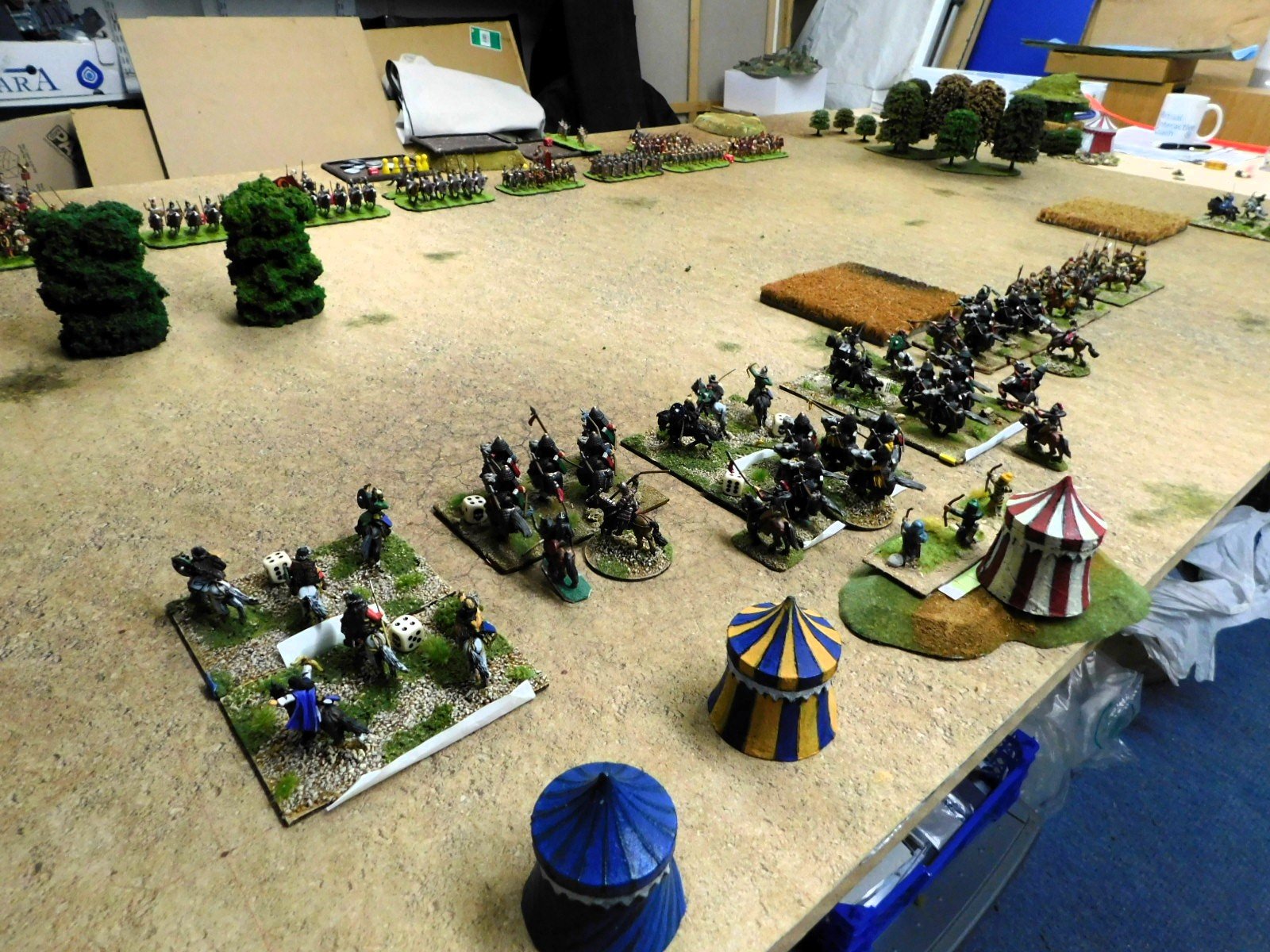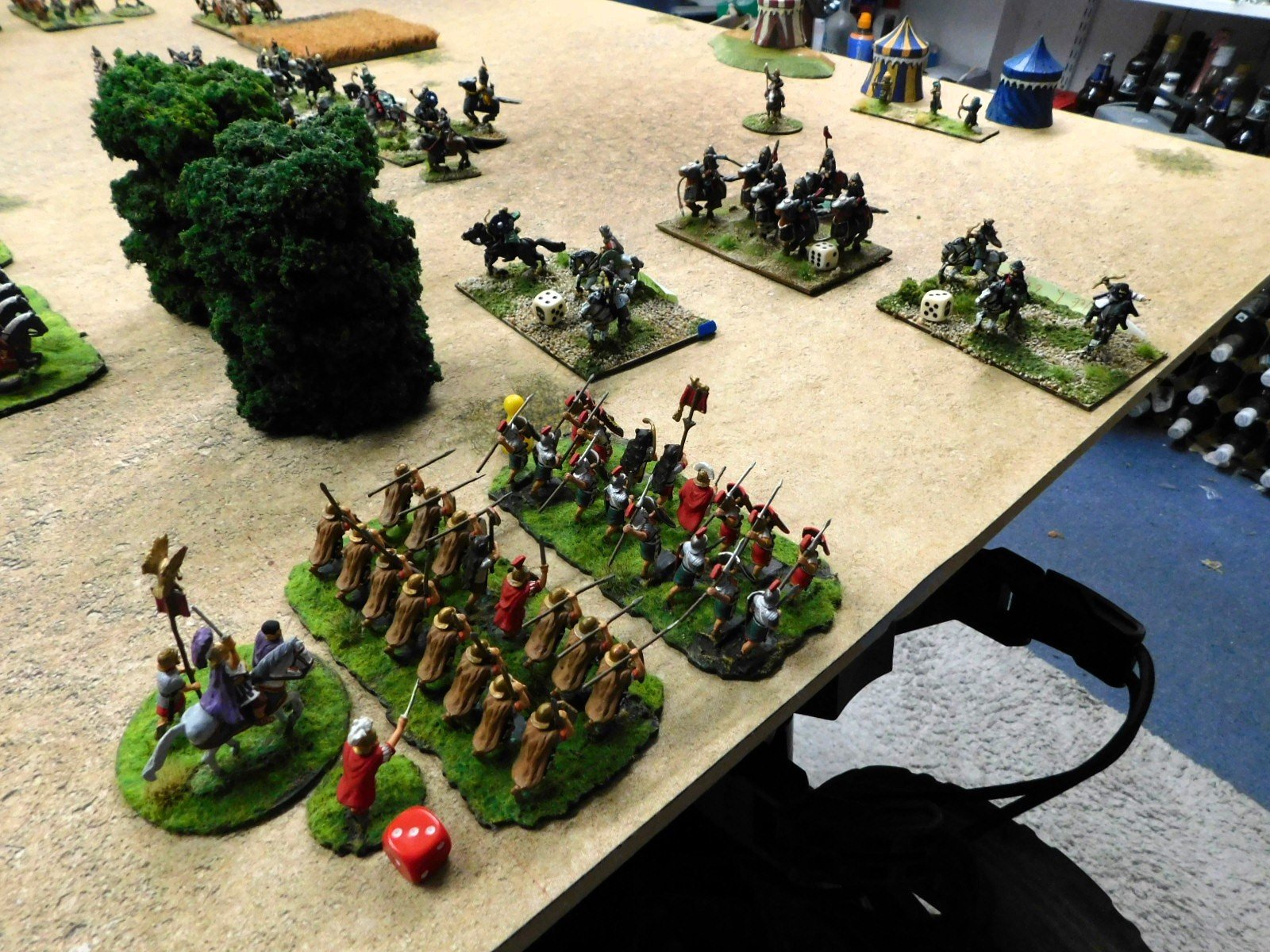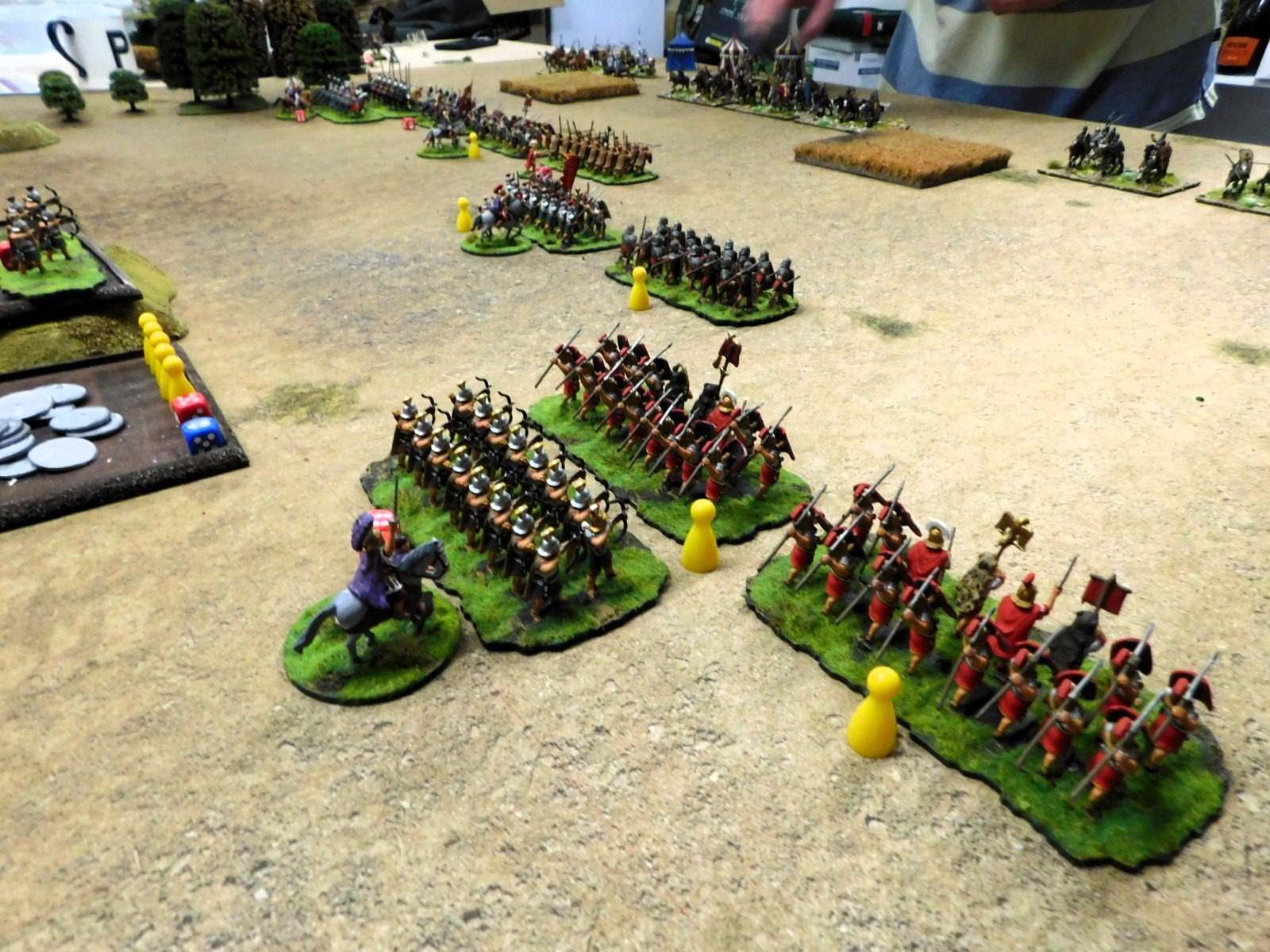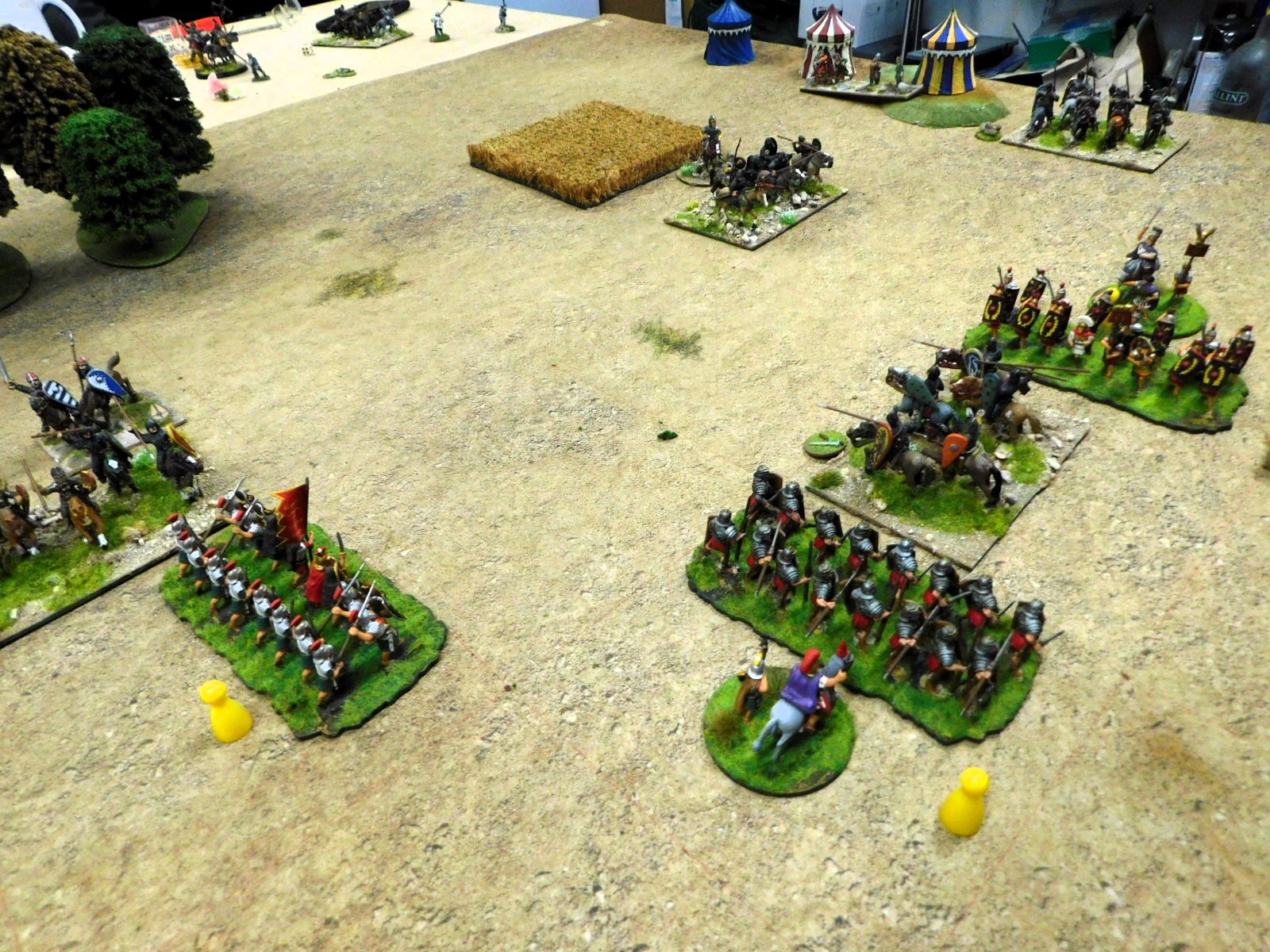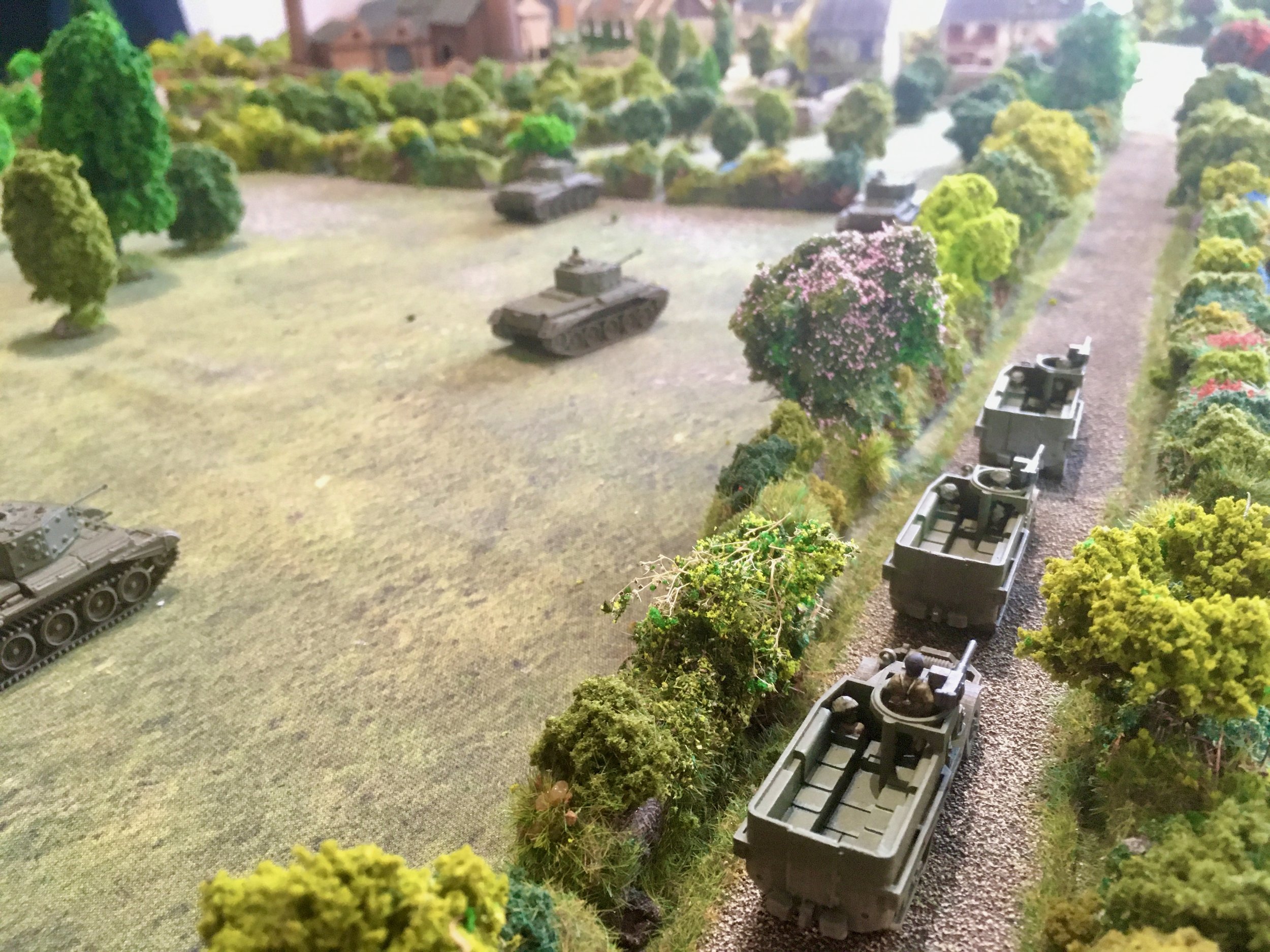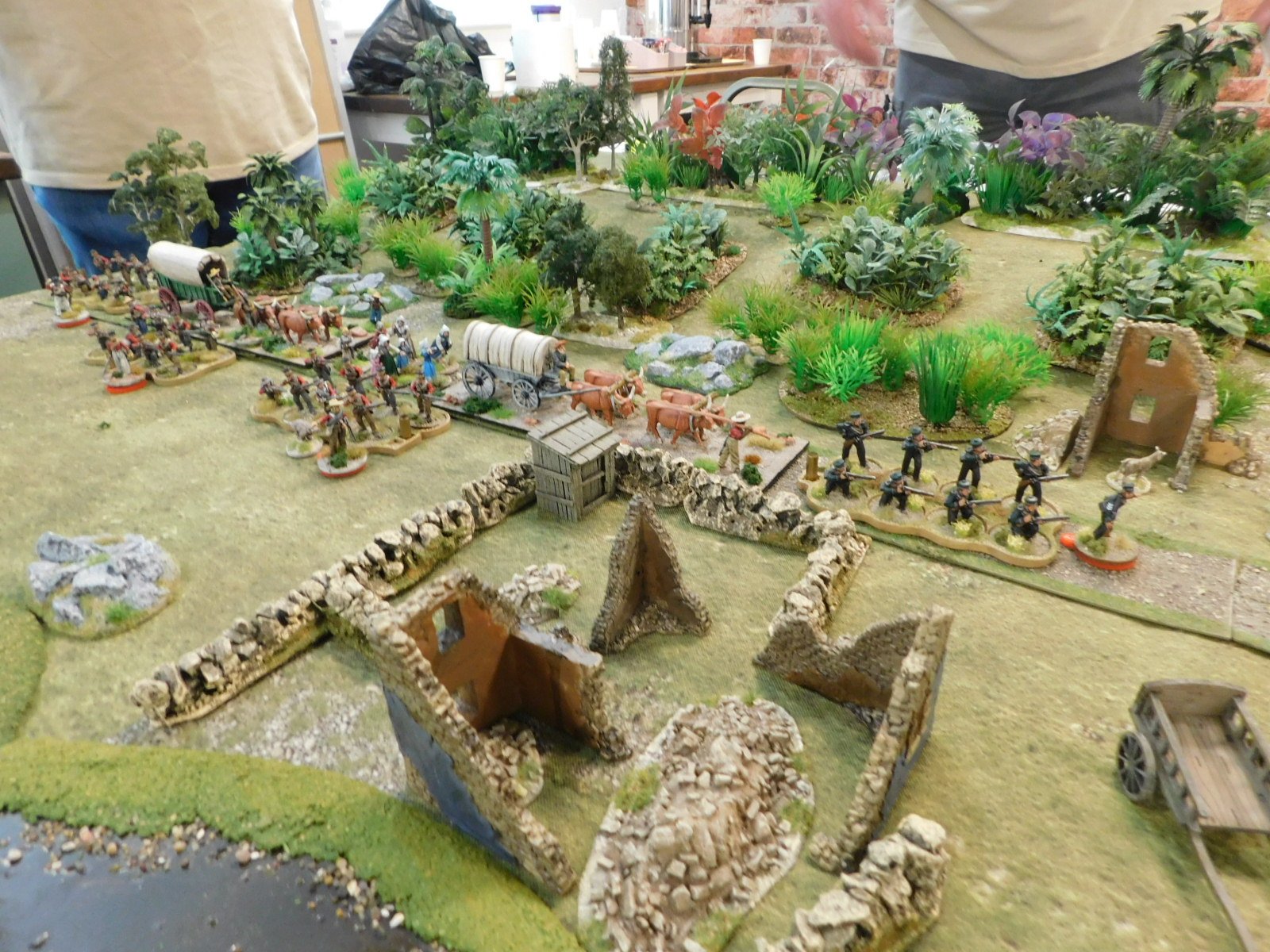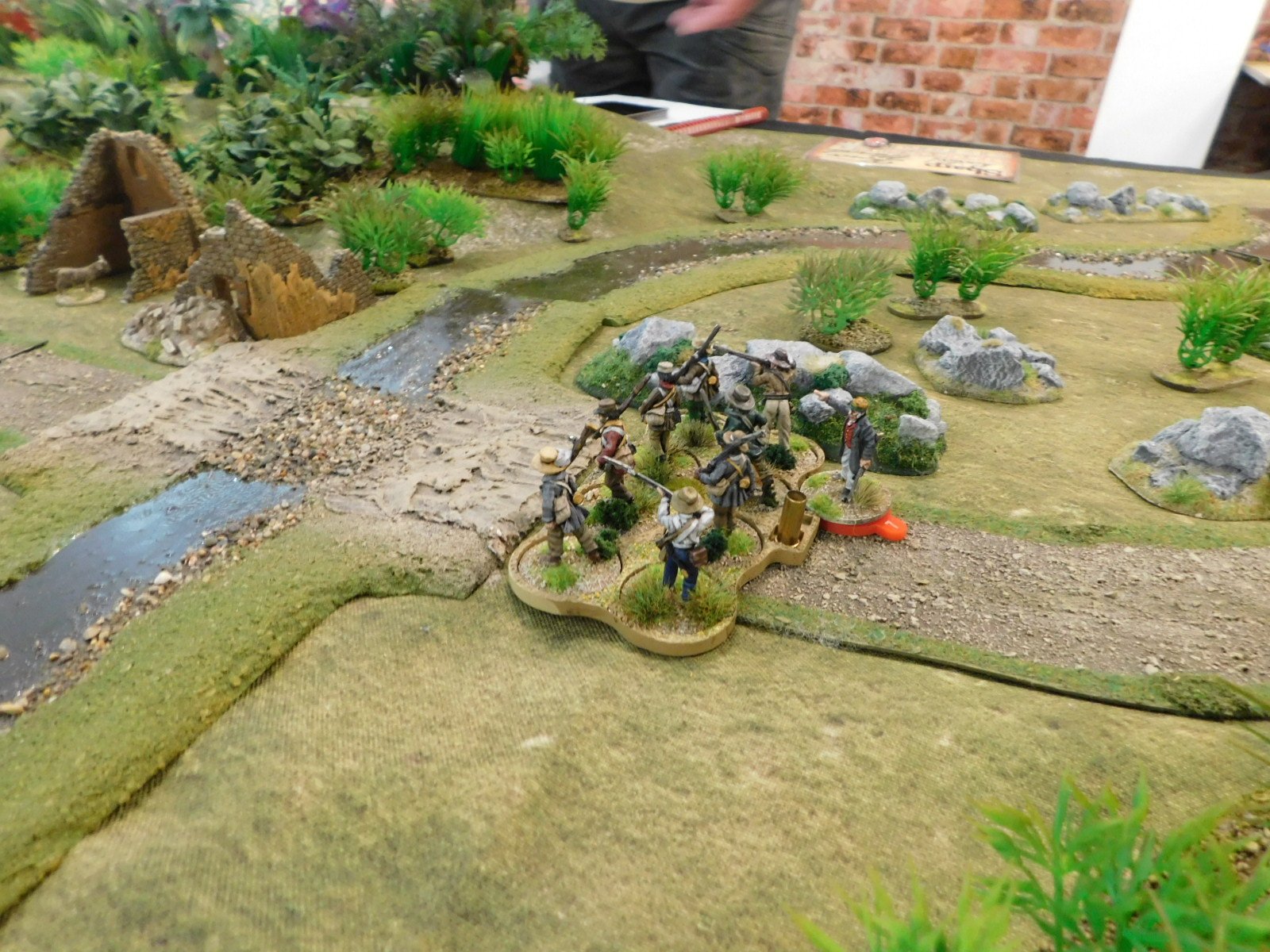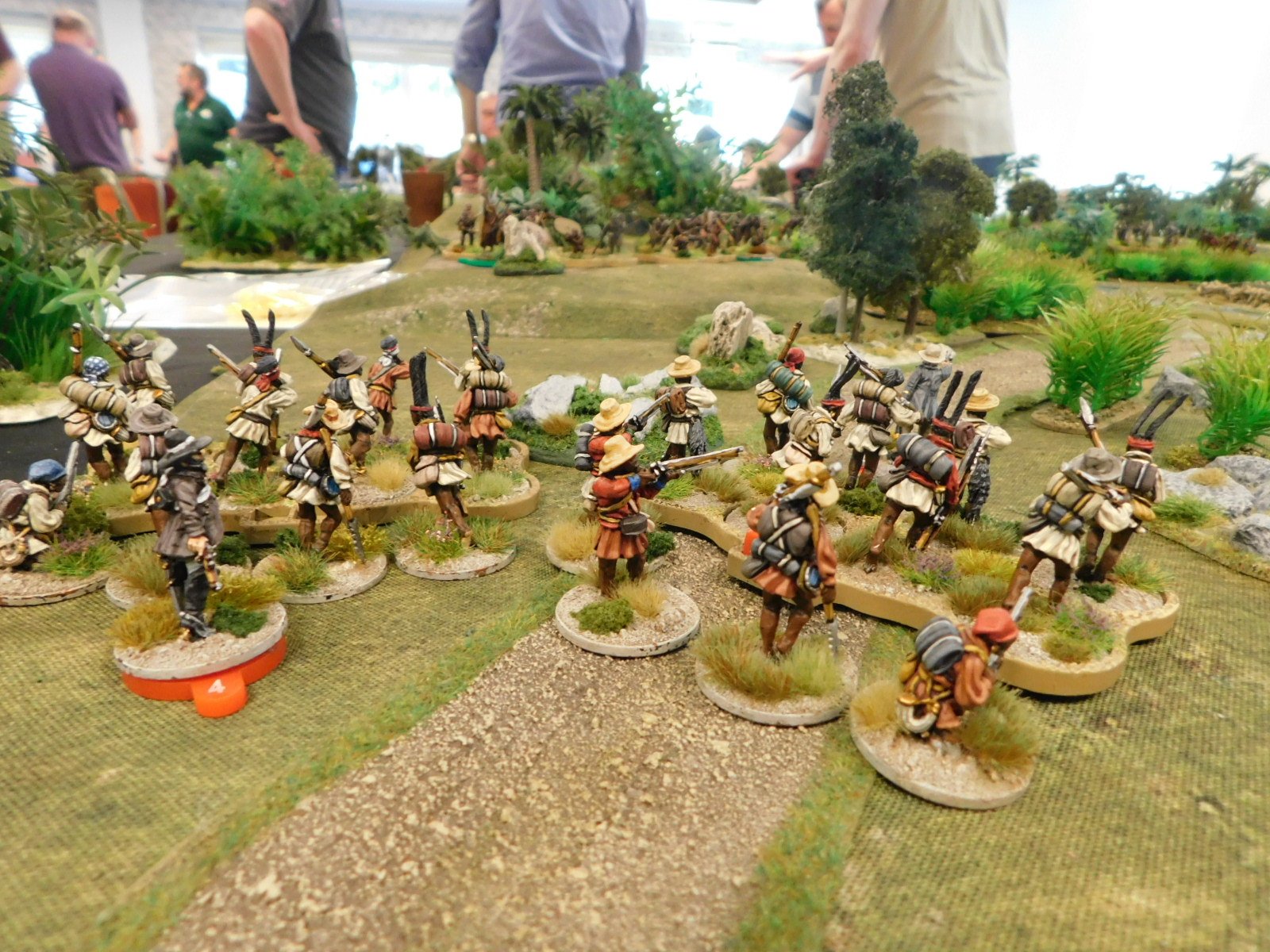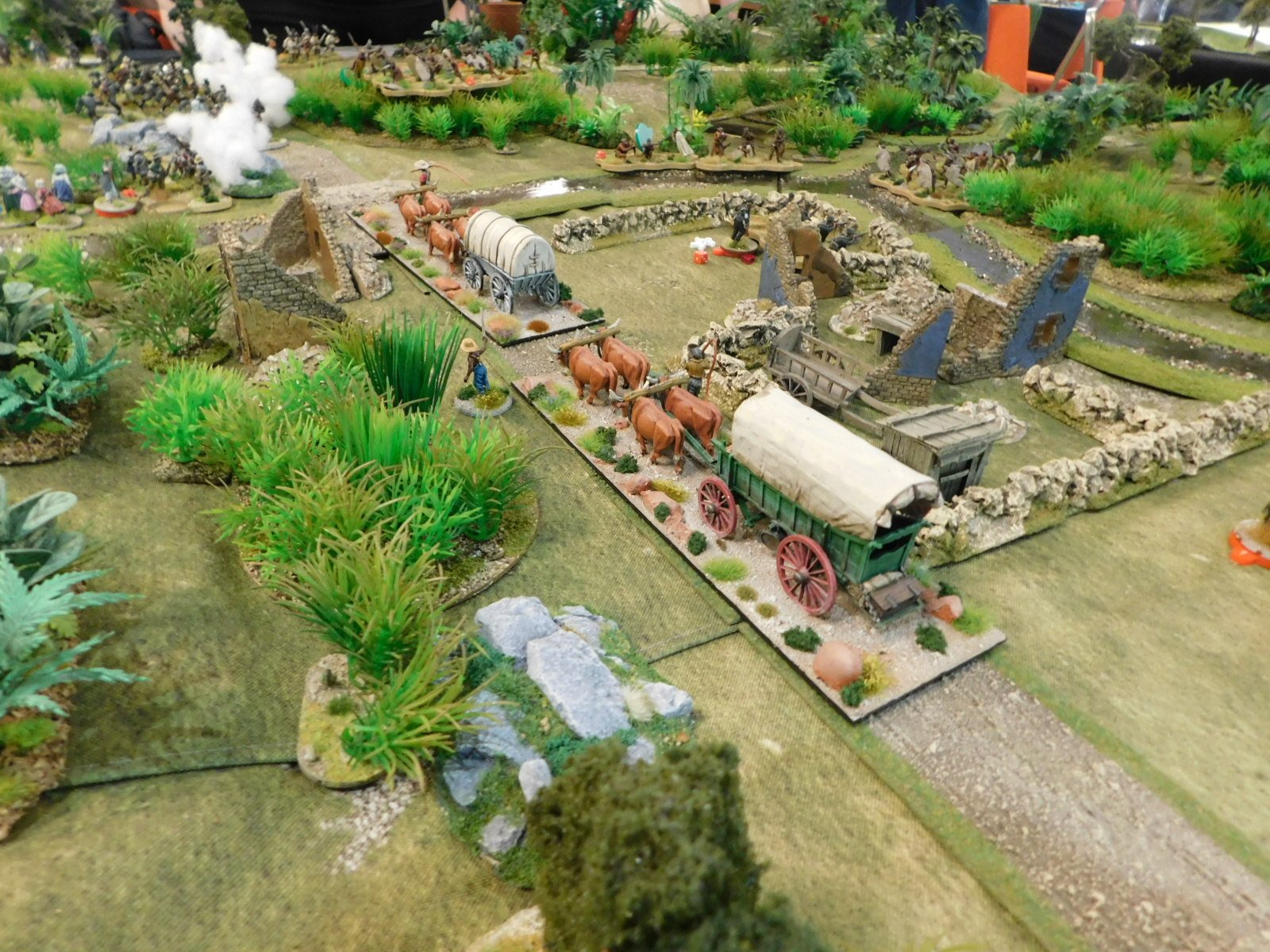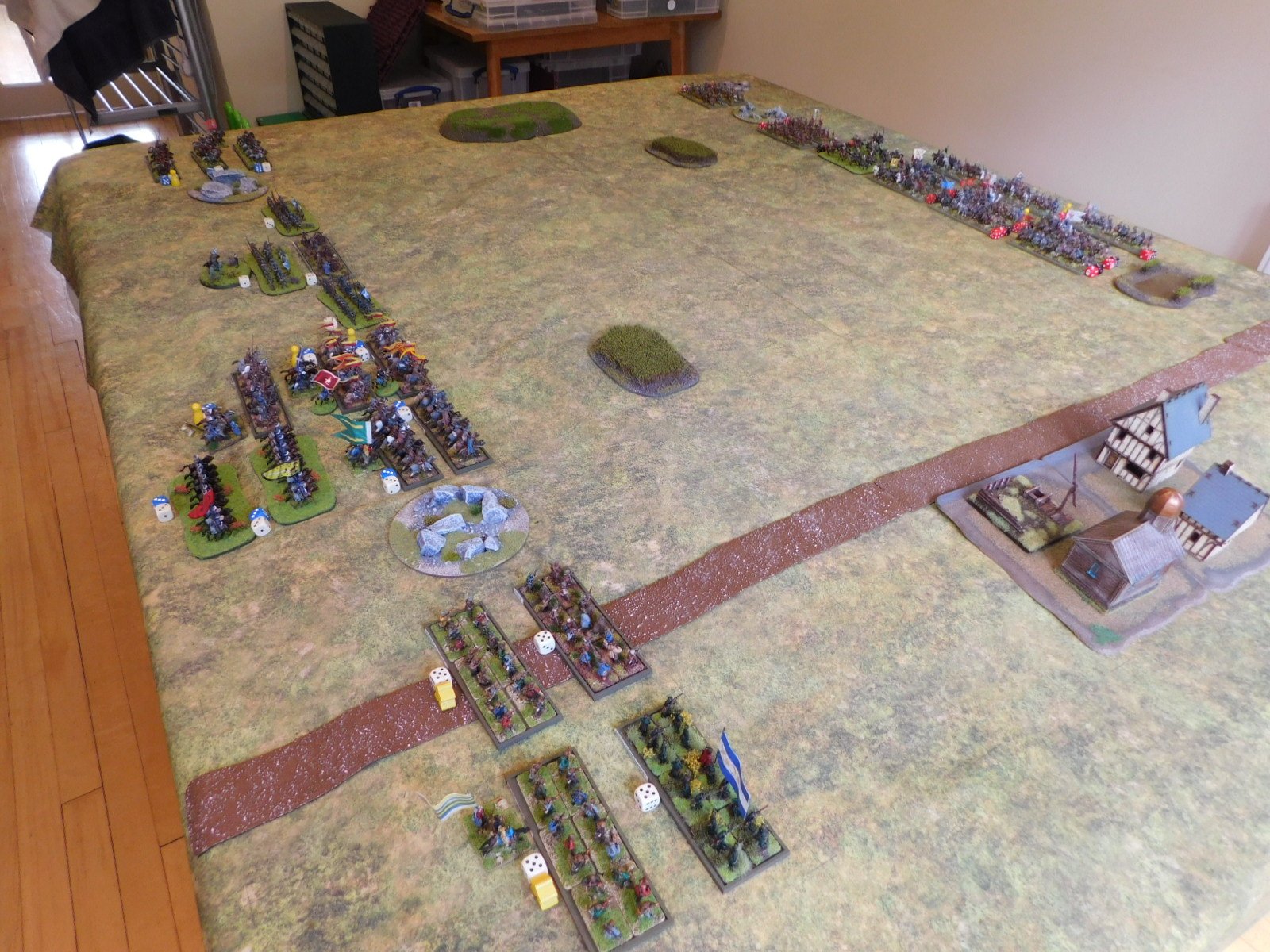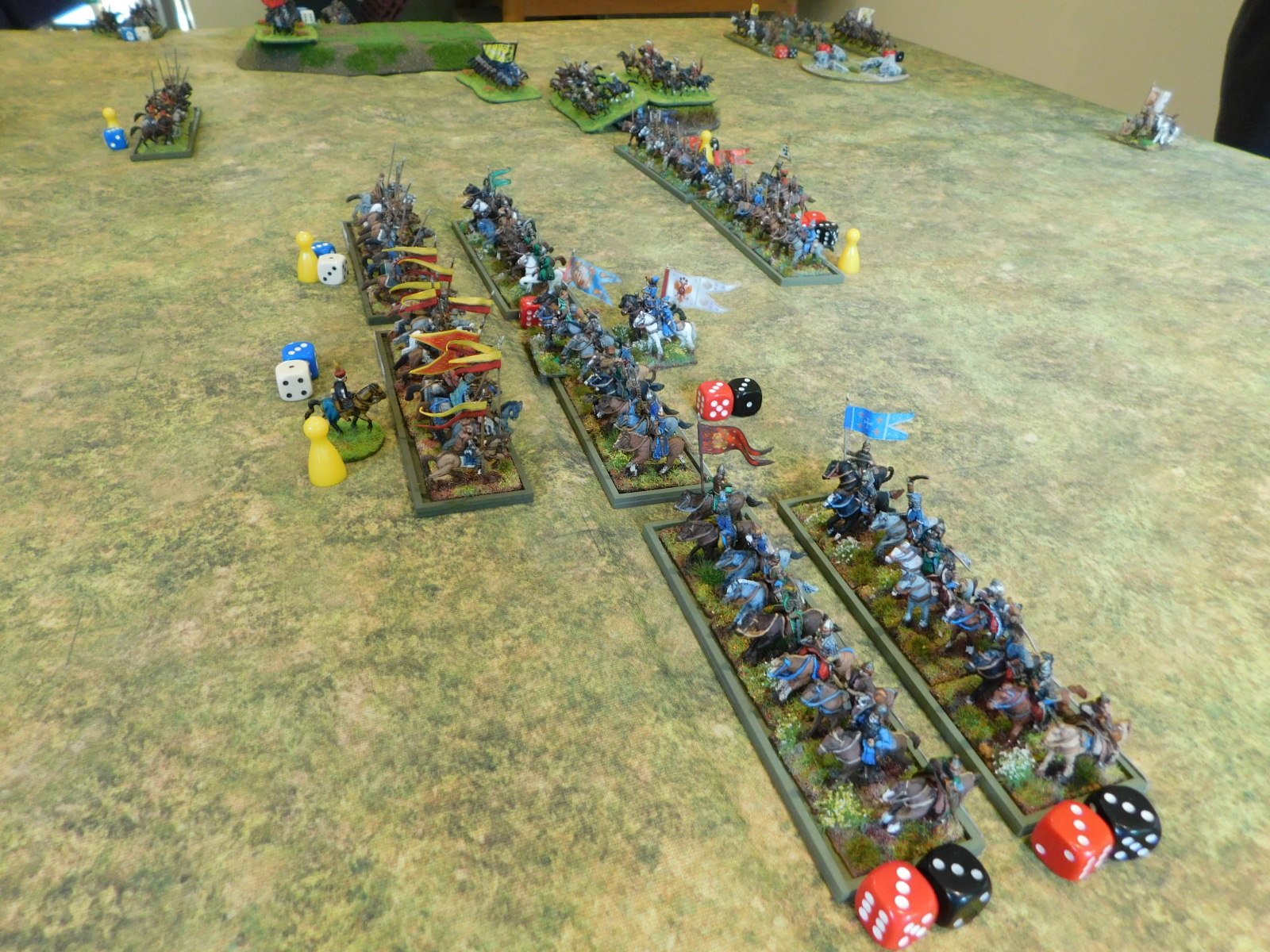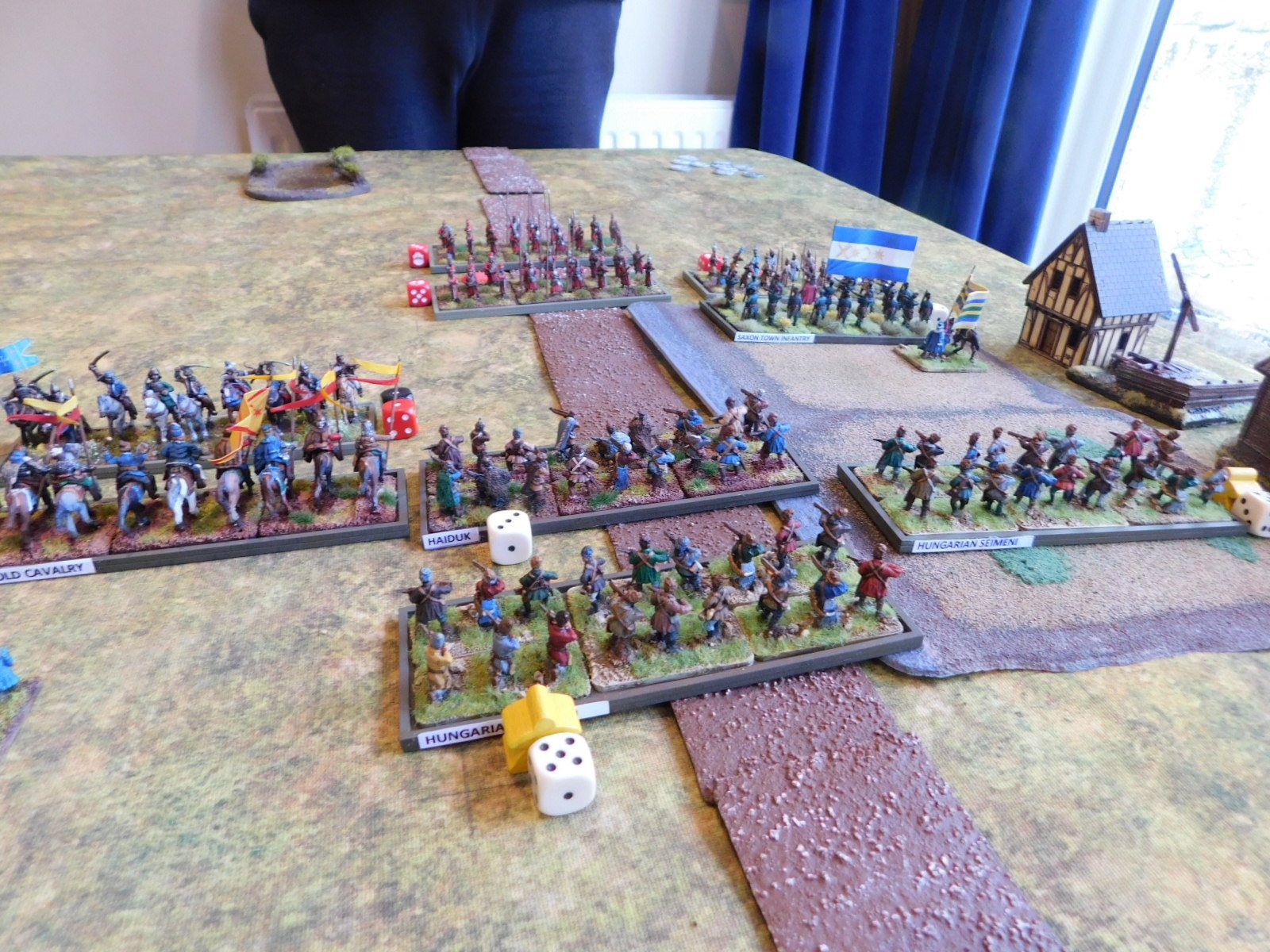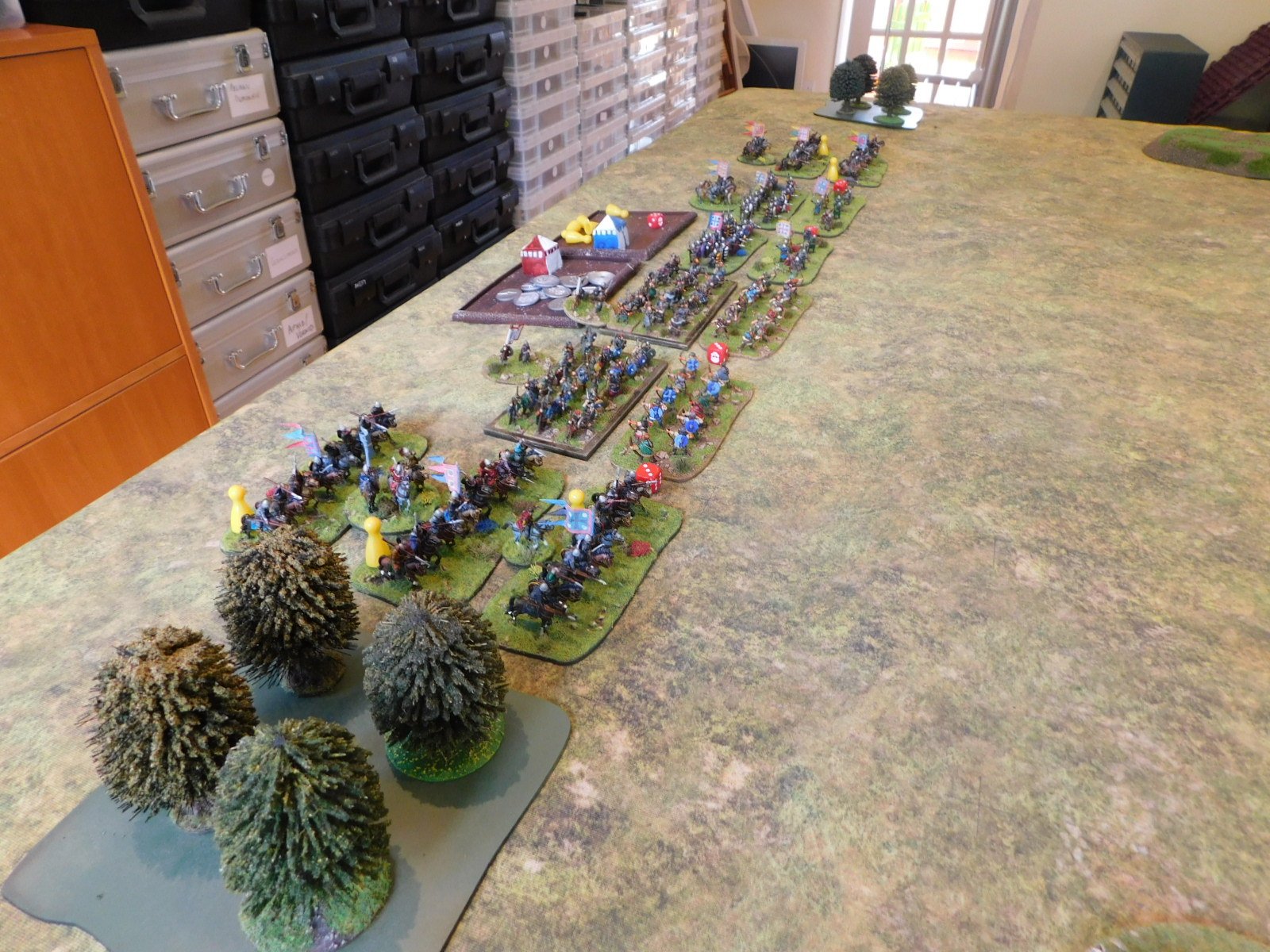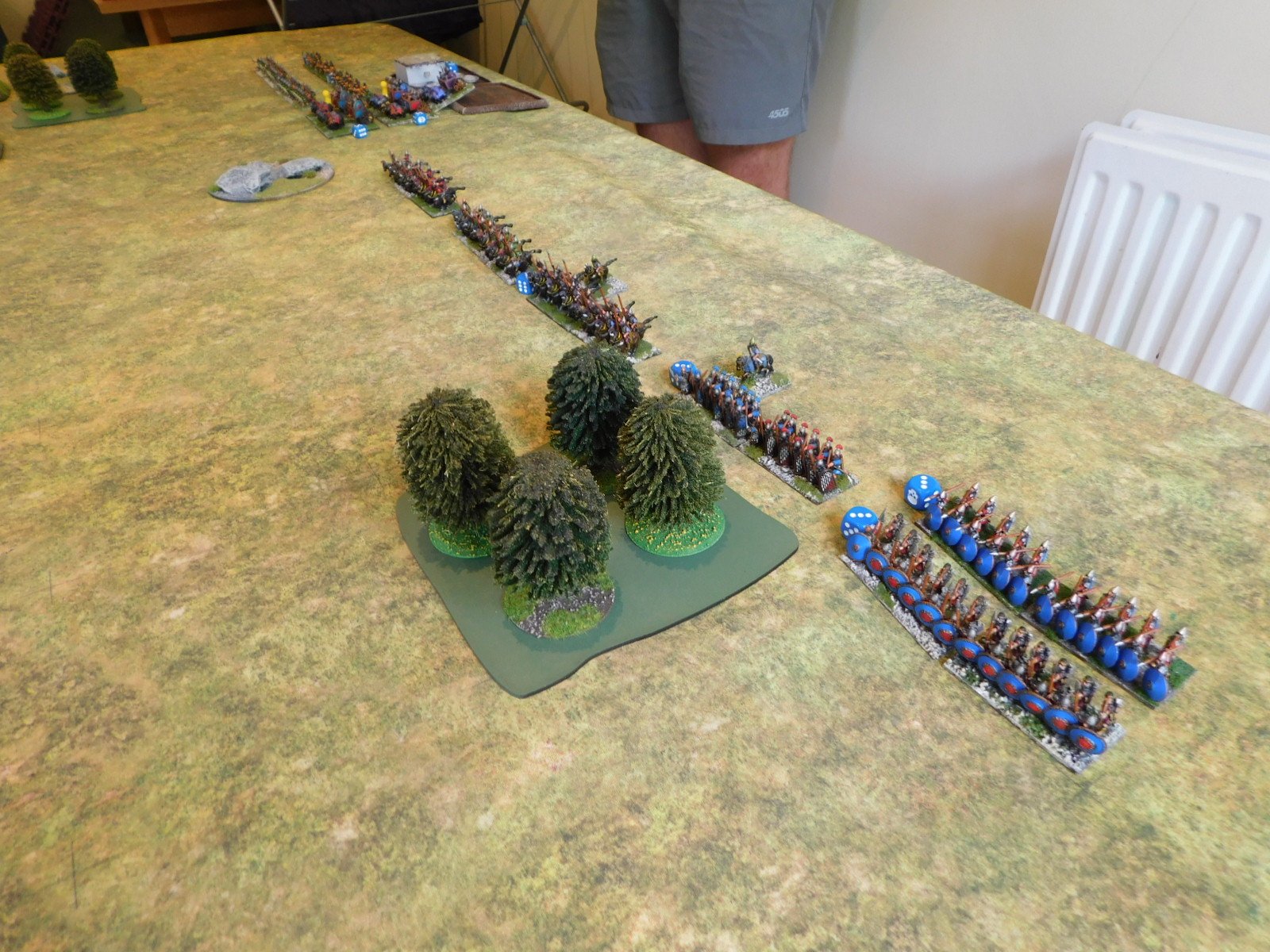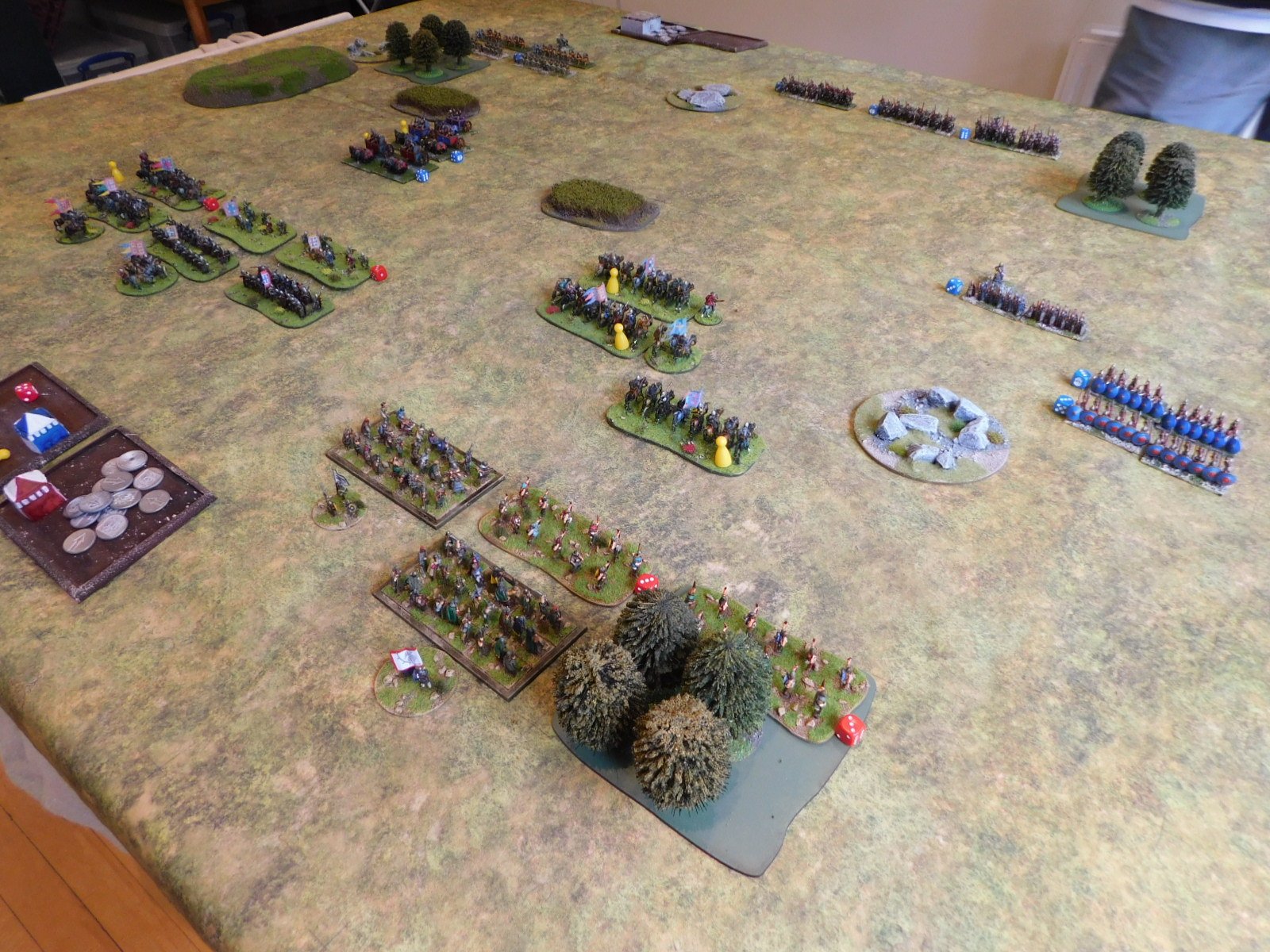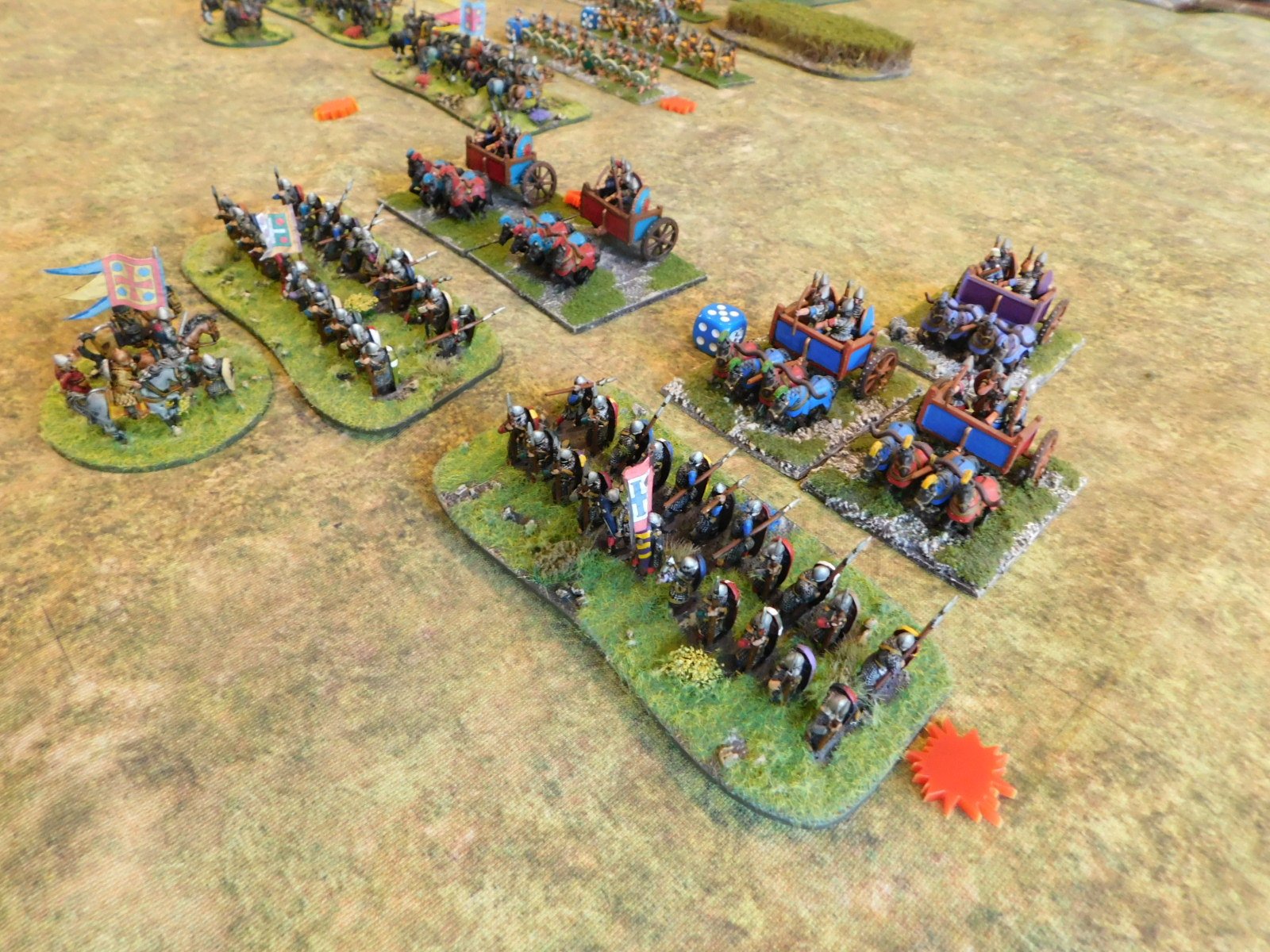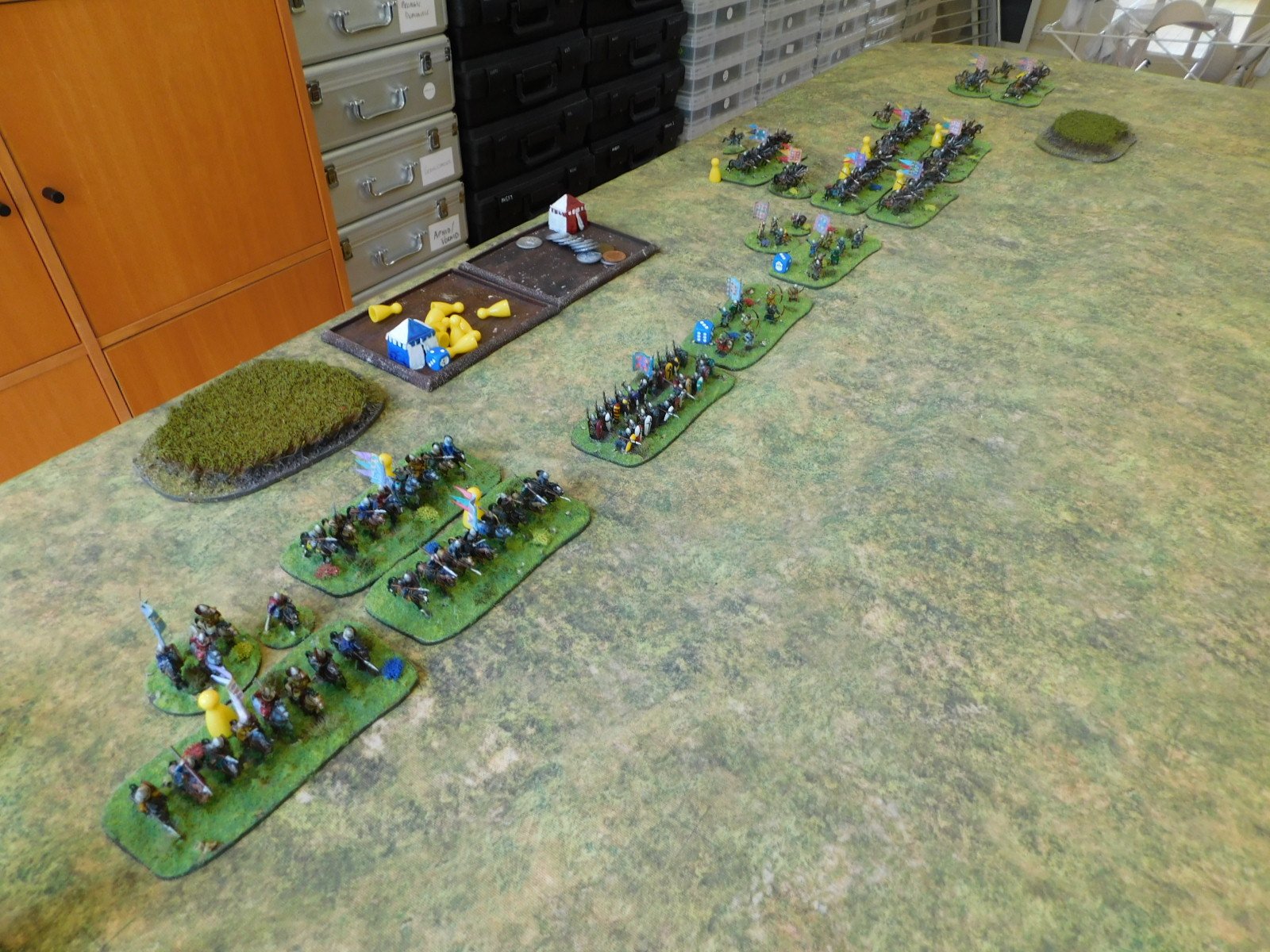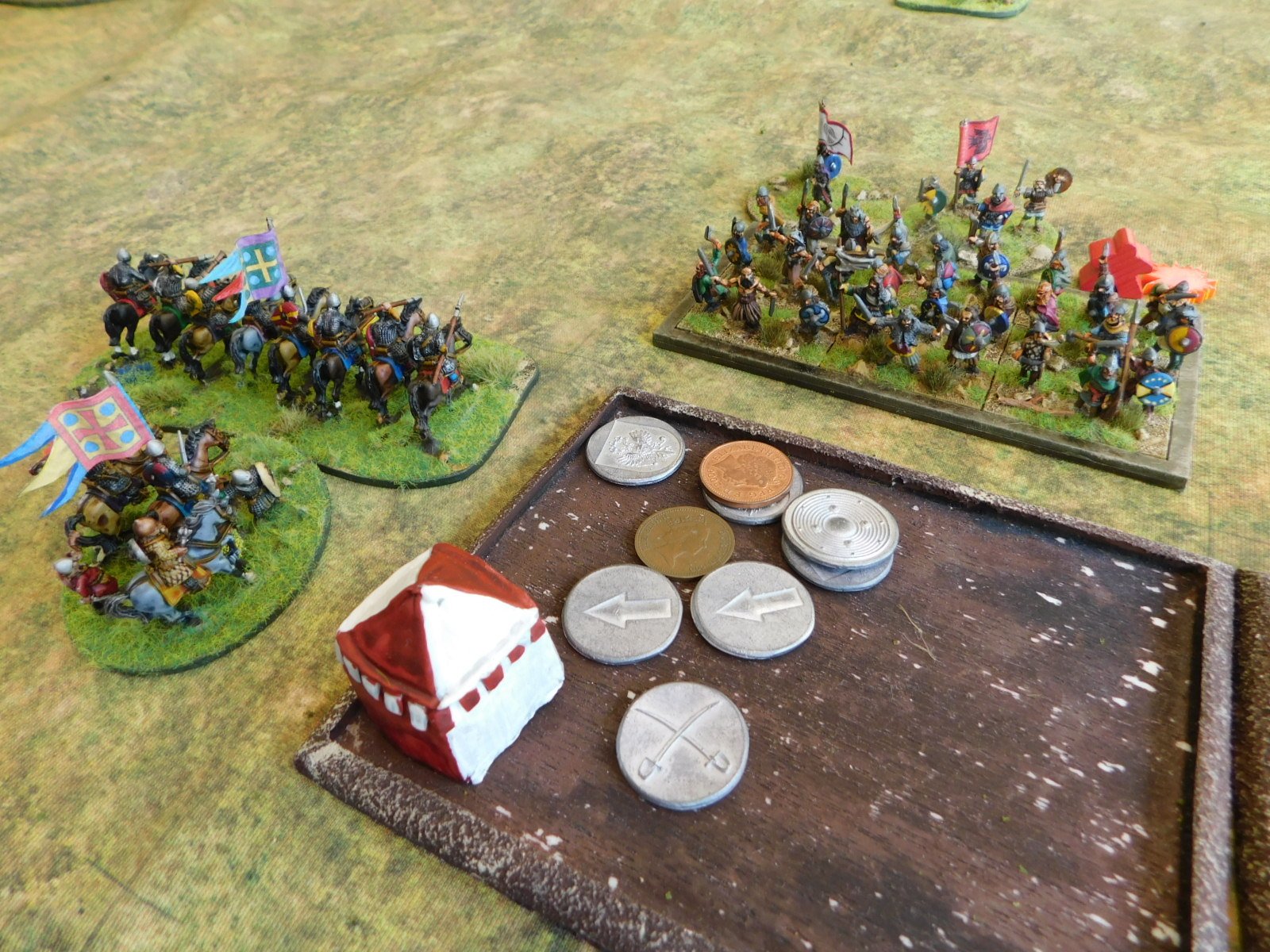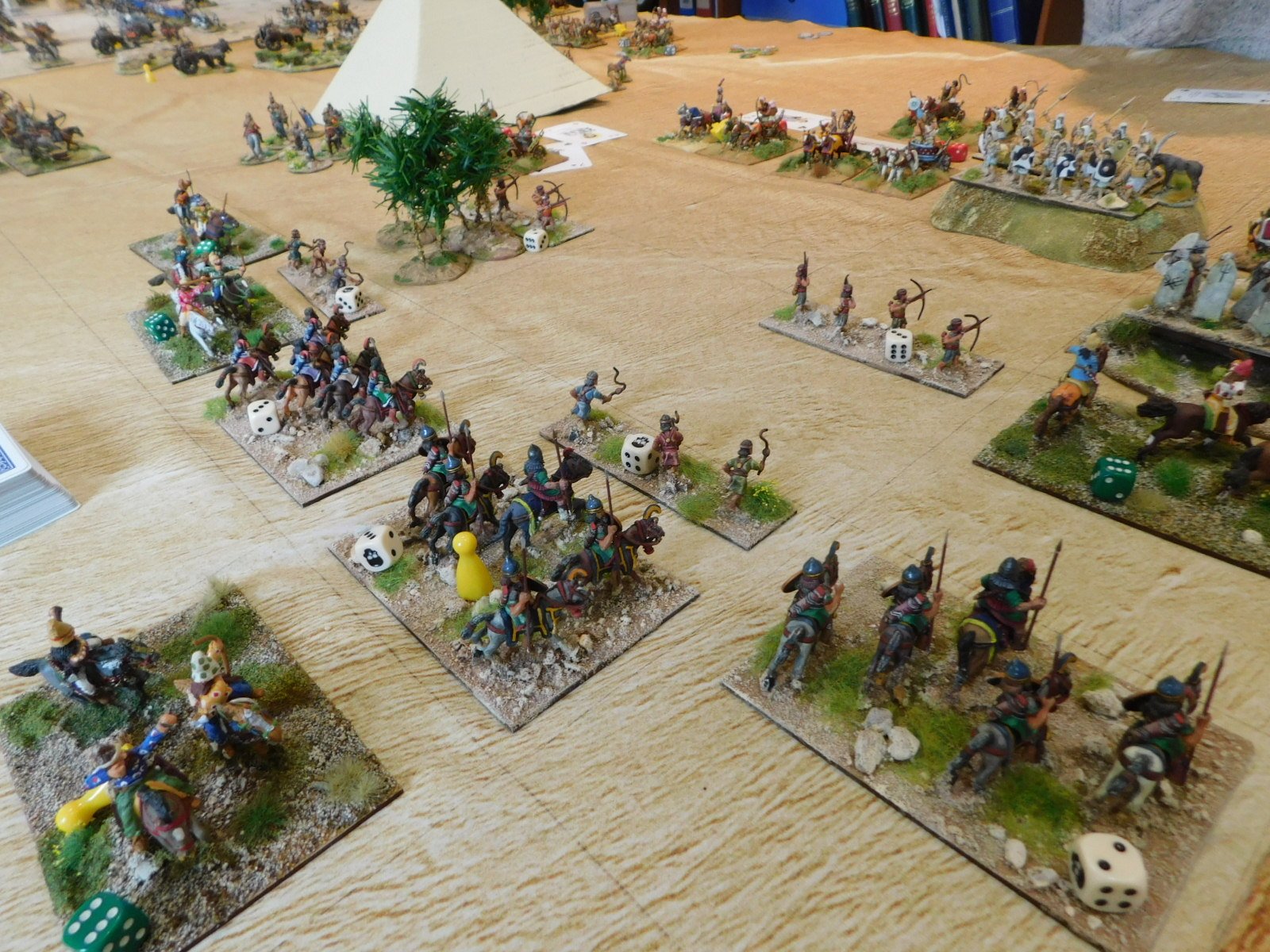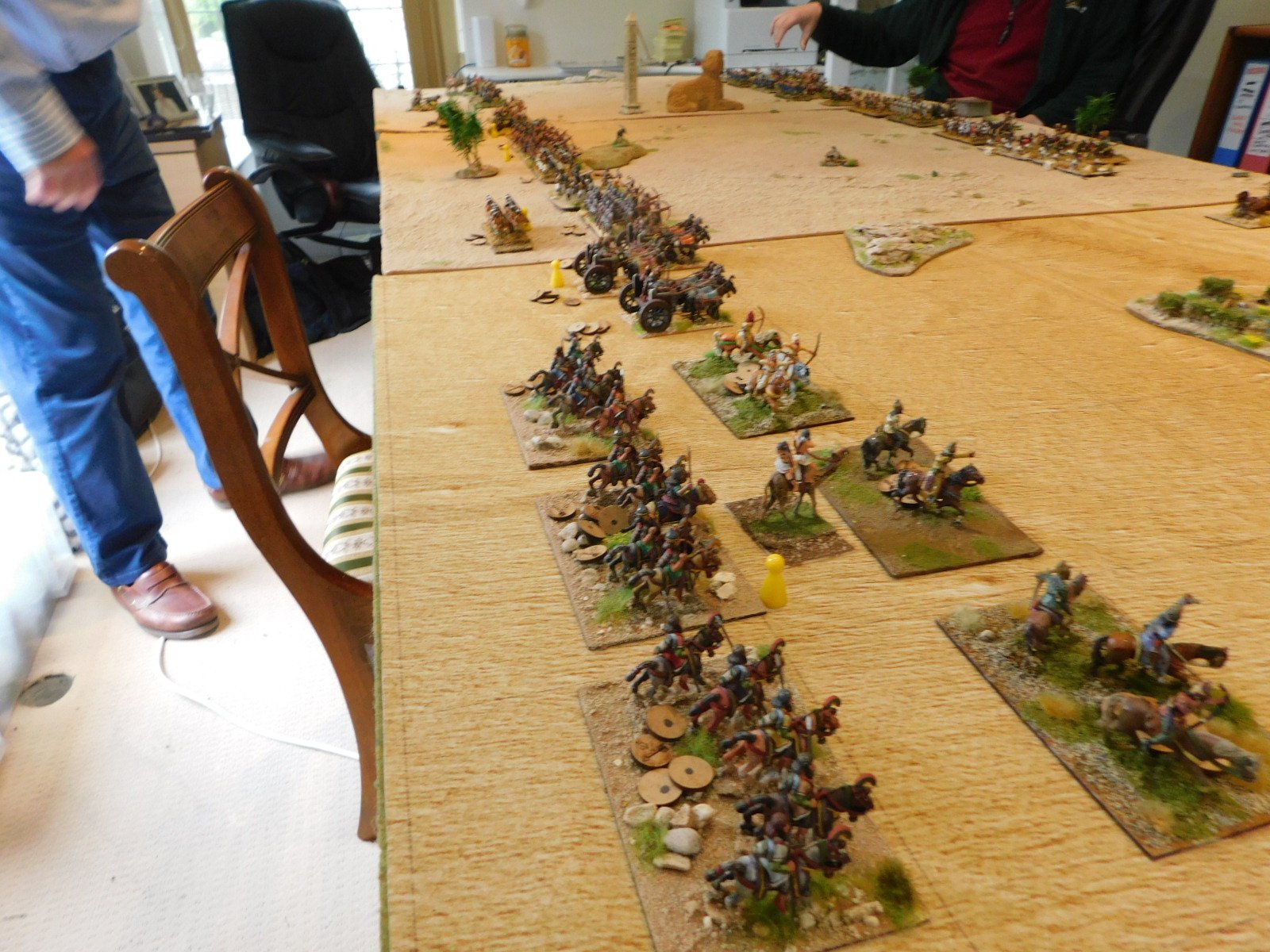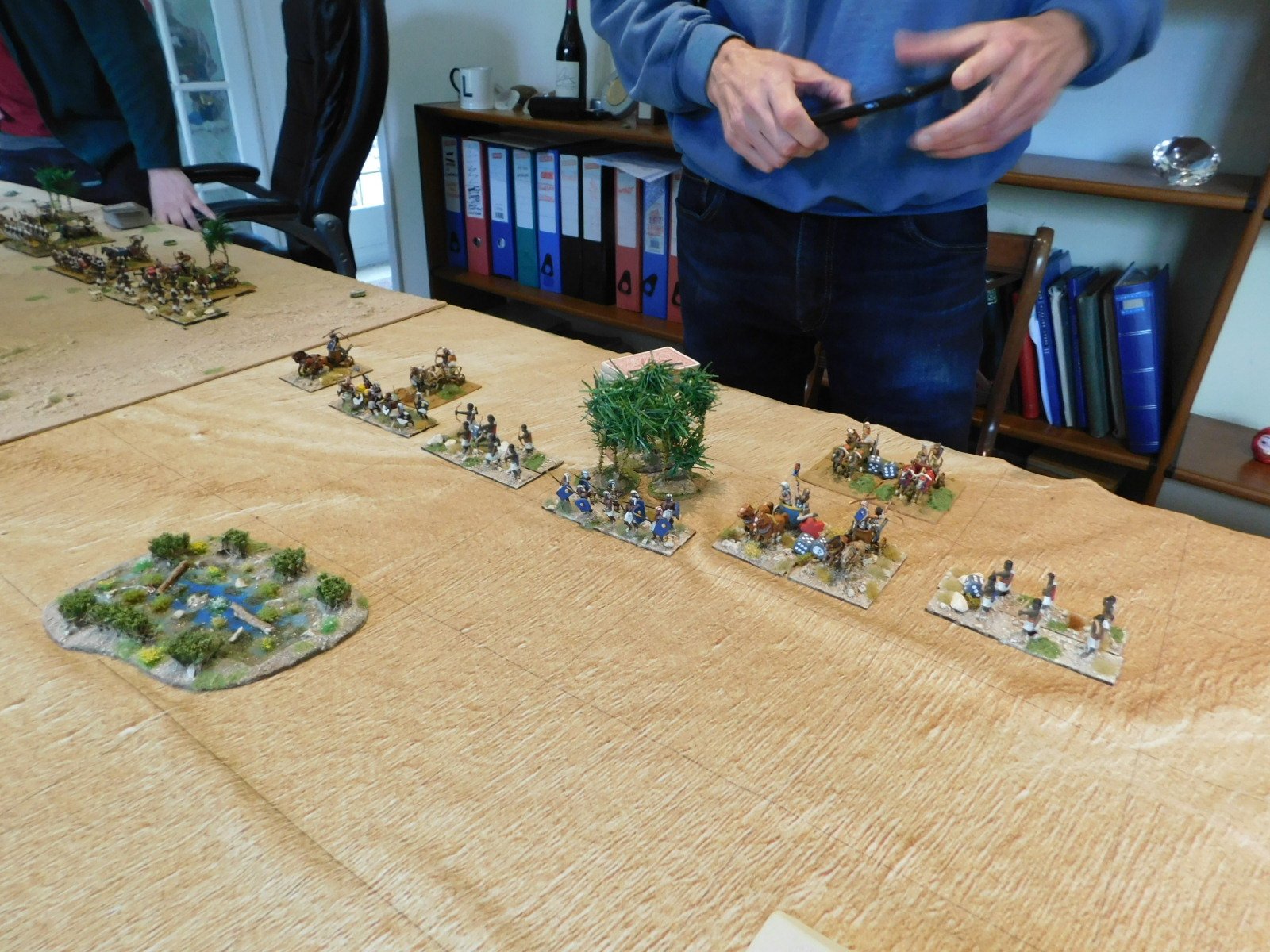The Mega-Game
Fortunately my team partner, Peter, had done somewhat better than I had, and we went into the final mega-game only two points behind. We then sacrificed two more victory coins to make sure that we took the Assyrians: so four down in all.
We played this enormous battle as one game in two halves, meaning that there were a couple of times that the two halves got out of sync and one side or the other had to pause and wait for the other to catch up. Dillon, playing in the centre on the enemy side, had to fight Peter with some of his commands and me with what was left. Despite these small speedbumps, the game rattled on at a cracking pace, showing what a robust system To The Strongest is.
Not only was the game cracking, but also very close. We started off with me doing rather well, and Peter doing less well. Then I had a catastrophic turn when I shed victory coins like last year’s fashion (not sure where that metaphor came from!) but recovered to deal out the same treatment to my main opponent, Si, immediately afterwards.
Both Peter and I then continued to alternate good patches with bad patches, calling out our successes (and failures) to the other as they happened. Finally the last Egyptian victory medal was won, and it all came down to how many we had left.
We’d been keeping them in a little pot, and, at first, it looked as if we had hardly any left at all. This was, however, an illusion, as we’d been taking out the big medals as we went along leaving only the little ones behind. The final score was 42:31 to Peter and I, meaning that we had won the day overall.





















